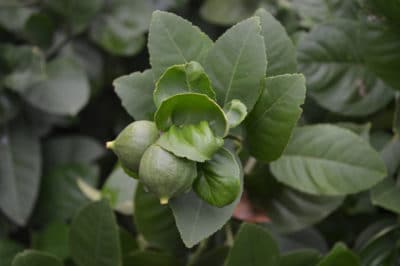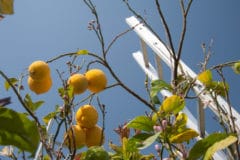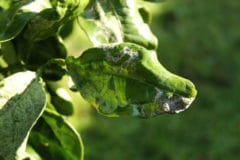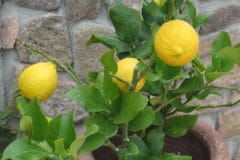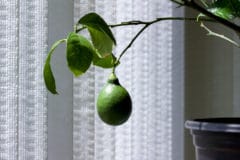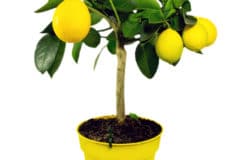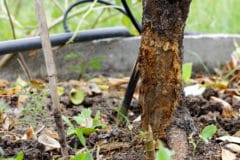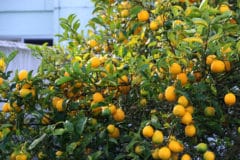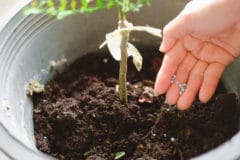Yellowing Leaves
Lemon tree leaves turn yellow for a variety of reasons. The pattern of yellowing will help you pinpoint what’s wrong with yours.
Nutrient Deficiency
- Nitrogen deficiency turns the entire canopy yellow
- Iron, zinc and manganese deficiencies yellow everything but the leaf veins.
- Potassium deficiency produces yellow leaves with drooping tips.
- Magnesium deficiency causes a yellow blotch spreading from the base over the entire leaf.
Your lemon tree is a heavy feeder. To avoid nutrient deficiencies, give it organic, slow-release 6-3-3 citrus fertilizer granules fortified with essential trace minerals. Apply them at the manufacturer’s recommended frequency and amount.
Phytophthora Root Rot
This soil-borne fungus destroys lemon tree roots in wet soil. They can’t deliver moisture and nutrients to the leaves, which turn yellow as a result. Prevention requires planting in well-draining soil or on a raised bed and watering only when the top 6 inches of soil are dry.
Citrus Greening
Yellow leaves limited to one part of the canopy paired with misshapen, bitter lemons indicate fatal, insect-transmitted citrus greening disease. An infected lemon threatens all nearby citrus, so remove, bag and burn it.
Brown, Dry Leaves
Spider mites often attack lemon trees growing in the hot, dry parts of USDA hardiness zones 9 through 11. They feed on leaf fluids. The infested leaves wilt, turn brown and typically drop in clusters. Look for the pest’s webbing on the leaves to confirm the diagnosis.
Control mites by spraying with organic insecticidal soap until the leaves are dripping. Repeat weekly until they’re gone, and water your tree well during dry spells.
Curled Leaves
Frost lasting longer than 30 minutes leaves lemon tree leaves brittle and curled. They’ll either thaw and survive, or fall and give way to healthy replacements. As soon as frost is predicted, drape your tree with a blanket or frost cloth to save them.
Insufficient Water
Lemon trees short on water also get curled leaves. Water a first-year tree:
- Every five to seven days from spring to mid-fall.
- Every week to 10 days from mid-fall to winter.
- Every two weeks in winter.
For an established tree, water every two weeks under normal conditions and every 10 days during dry, hot weather.
Expert gardener’s tip: Always water slowly and deeply out to the dripline at the canopy’s edge.
